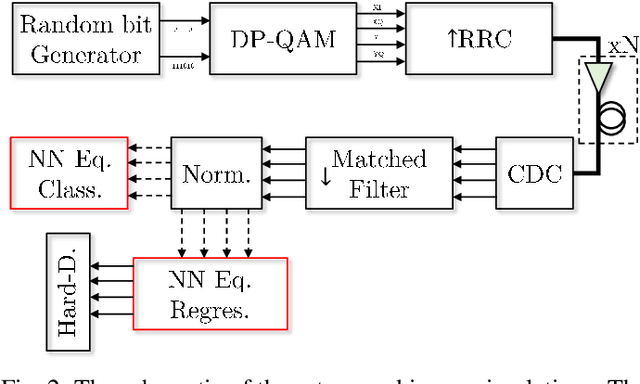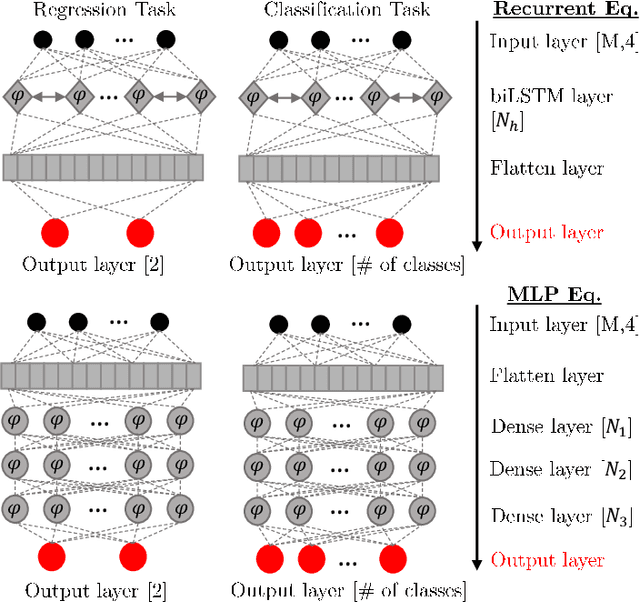Neural networks based post-equalization in coherent optical systems: regression versus classification
Paper and Code
Oct 17, 2021



In this paper, we address the question of which type of predictive modeling, classification, or regression, fits better the task of equalization using neural networks (NN) based post-processing in coherent optical communication, where the transmission channel is nonlinear and dispersive. For the first time, we presented some possible drawbacks in using each type of predictive task in a machine learning context for the nonlinear channel equalization problem. We studied two types of equalizers based on the feed-forward and recurrent neural networks over several different transmission scenarios, in linear and nonlinear regimes of the optical channel. We observed in all those cases that the training based on regression results in faster convergence and finally a superior performance, in terms of Q-factor and achievable information rate.
 Add to Chrome
Add to Chrome Add to Firefox
Add to Firefox Add to Edge
Add to Edge